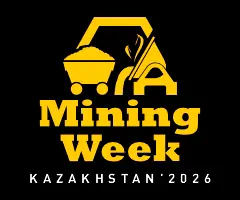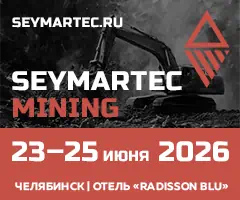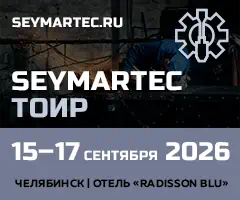Improving the efficiency of coal seam degassing during its preparation for safe extraction based on the use of the sorption deformation effect
 K.S. Kolikov1, A.I. Manevich1, 2, N.V. Ledyaev3, I.A. Komissarov3
K.S. Kolikov1, A.I. Manevich1, 2, N.V. Ledyaev3, I.A. Komissarov3
1 National University of Science and Technology MISIS, Moscow, Russian Federation
2 Geophysical Center, Russian Academy of Sciences, Moscow, Russian Federation
3 JSC SUEK-Kuzbass, Kemerovo, Russian Federation
Russian Mining Industry №2 / 2025 p.92-96
Abstract: The article examines an innovative approach to improving the efficiency of coal seam degassing aimed at ensuring the safety of mining operations in areas prone to hazardous geodynamic phenomena. The proposed method is based on the use of the sorption deformation effect that occurs during coal degassing and includes comprehensive technological operations for managing methane emission from coal seams. The methodology involves drilling degassing boreholes, periodically closing and opening them, and utilizing the mechanism of auto-pneumatic treatment of the seam. This approach creates zones of increased gas permeability around the boreholes due to micro cracks caused by the sorption-induced stresses, which significantly increases methane flow rates. The analysis shows that the proposed method reduces material costs, ensures a stable increase in the borehole output by several times, and contributes to the relaxation of anomalous stresses in the coal seams. Experimental tests conducted at coal mines in the Kuzbass and Karaganda coal basins confirmed high efficiency of the technology, making it promising for use in the development of gas-rich coal seams with high outburst hazards. The research results can be applied to improve the technical and economic performance of mining coal deposit.
Keywords: coal seam, methane, sorption, shrinkage, mechanical stress, gas permeability of coal seam, safety of mining operations
For citation: Kolikov K.S., Manevich A.I., Ledyaev N.V., Komissarov I.A. Improving the efficiency of coal seam degassing during its preparation for safe extraction based on the use of the sorption deformation effect. Russian Mining Industry. 2025;(2):92–96. (In Russ.) https://doi.org/10.30686/1609-9192-2025-2-92-96
Article info
Received: 19.02.2025
Revised: 03.03.2025
Accepted: 10.03.2025
Information about the authors
Konstantin S. Kolikov – Dr. Sci. (Eng.), Professor, Head of the Department of the Safety and ecology of mining, National University of Science and Technology MISIS, Moscow, Russian Federation; e-mail: This email address is being protected from spambots. You need JavaScript enabled to view it.
Alexander I. Manevich – Research Scientist, Laboratory of Geodynamics, Geophysical Center, Russian Academy of Sciences; Lecturer of the Department of the Safety and ecology of mining, National University of Science and Technology MISIS, Moscow, Russian Federation; https://orcid.org/0000-0001-7486-6104; e-mail: This email address is being protected from spambots. You need JavaScript enabled to view it.
Nikolay V. Ledyaev – Head of the Department of Emergency Management of Enterprises of JSC SUEK-Kuzbass, Kemerovo, Russian Federation
Igor A. Komissarov – Head of the Department of VGK and Control of Dynamic Phenomena of JSC SUEK-Kuzbass, Kemerovo, Russian Federation
References
1. Пучков Л.А., Сластунов С.В., Коликов К.С. Извлечение метана из угольных пластов. М. МГГУ; 2002. 383 с.
2. Большинский М.И., Лысиков Л.А., Каплюхин А.А. Газодинамические явления в шахтах. Севастополь: Вебер; 2003. 284 с. Режим доступа: https://bergmaster.narod.ru/techno-lit/2003_gdj-v-schahtah.pdf (дата обращения: 12.02.2025).
3. Сердюков С.В., Курленя М.В., Рыбалкин Л.А., Шилова Т.В. Влияние гидроразрыва угля на фильтрационное сопротивление зоны дренирования дегазационной скважины. Физико-технические проблемы разработки полезных ископаемых. 2019;(2):3–13. https://doi.org/10.15372/FTPRPI20190201 Serdyukov S.V., Kurlenya M.V., Rybalkin L.A., Shilova T.V. Hydraulic fracturing effect on filtration resistance in gas drainage hole area in coal. Journal of Mining Science. 2019;55(2):175–184. https://doi.org/10.1134/S1062739119025432
4. Palmer I. Permeability changes in CBM reservoir during production: an update and implementations for CO2 injection. In: Proceedings of the 2004 International Coalbed Methane Symposium, Tuscaloosa, Alabama, 3–7 May 2004. Alabama: The University of Alabama, 2004, paper 0403. Available at: https://www.adv-res.com/Coal-Seq_Consortium/ECBM_ Sequestration_Knowledge_Base/CBM%20Symposium%202004/0403.pdf (accessed: 27.12.2024).
5. Palmer I., Mavor M., Gunter B. Permeability changes in coal seams during production and injection. In: Proceedings of the 2007 International Coalbed Methane Symposium, Tuscaloosa, Alabama, 23–24 May, 2007. Curran Associates; 2007, paper 0713.
6. Сластунов С.В., Каркашадзе Г.Г., Коликов К.С., Ермак Г.П. Методика расчета допустимой нагрузки на очистной угольный забой по газовому фактору. Физико-технические проблемы разработки полезных ископаемых. 2013;(6):53–59. Режим доступа: https://www.sibran.ru/journals/issue.php?ID=154647&ARTICLE_ID=154675 (дата обращения: 12.02.2025). Slastunov S.V., Karkashadze G.G., Kolikov K.S., Ermak G.P. Calculation procedure for permissible coal breakage face output by gas factor. Journal of Mining Science. 2013;49(6):888–893. https://doi.org/10.1134/S1062739149060063
7. Gash B.W., Volz R.F., Potter G., Corgan J.M. The effects of cleat orientation and confining pressure on cleat porosity, permeability, and relative permeability. In: Proceedings of the 1992 International Coalbed Methane Symposium. Alabama; 1992, paper 9224.
8. Pan Z., Connell L.D. Modelling permeability for coal reservoirs: A review of analytical models and testing data. International Journal of Coal Geology. 2012;92:1–44. https://doi.org/10.1016/j.coal.2011.12.009
9. Wang X., Qi X., Ma H., Li S. Experimental investigation on the influence of temperature on coal and gas outbursts. Processes. 2023;11(6):1687. https://doi.org/10.3390/pr11061687
10. Акматов Д.Ж., Евлоев Х.Ю., Меллер А.Д., Манукян Т.А., Чадин В.Н. Методика численного моделирования полей напряжений в районе размещения угольных шахт. Горная промышленность. 2023;(1):39–44. https://doi.org/10.30686/1609-9192-2023-1-39-44 Akmatov D.Zh., Evloev H.Y., Meller A.D., Manukyan T.A., Chadin V.N. Methodology for numerical modeling of stress fields in vicinities of coal mines. Russian Mining Industry. 2023;(1):39–44. (In Russ.) https://doi.org/10.30686/1609-9192-2023-1-39-44
11. Manevich A.I., Kolikov K.S., Egorova E.A. Geoecological aspects of stress-strain state modeling results of Leninsky coal deposit (Kuzbass, Russia). Russian Journal of Earth Science. 2019;19:ES4002. https://doi.org/10.2205/2019ES000663
12. Shan P., Li W., Lai X., Zhang S., Chen X., Wu X. Research on the response mechanism of coal rock mass under stress and pressure. Materials. 2023;16(8):3235. https://doi.org/10.3390/ma16083235




